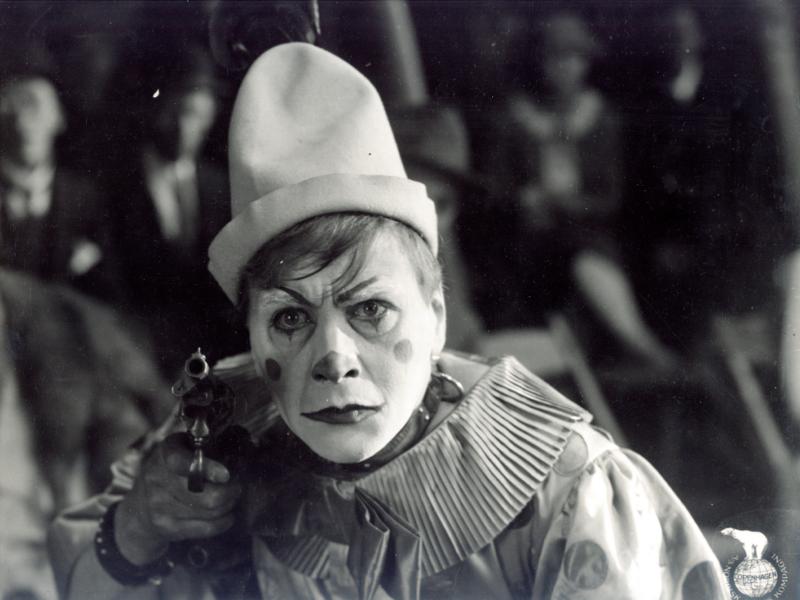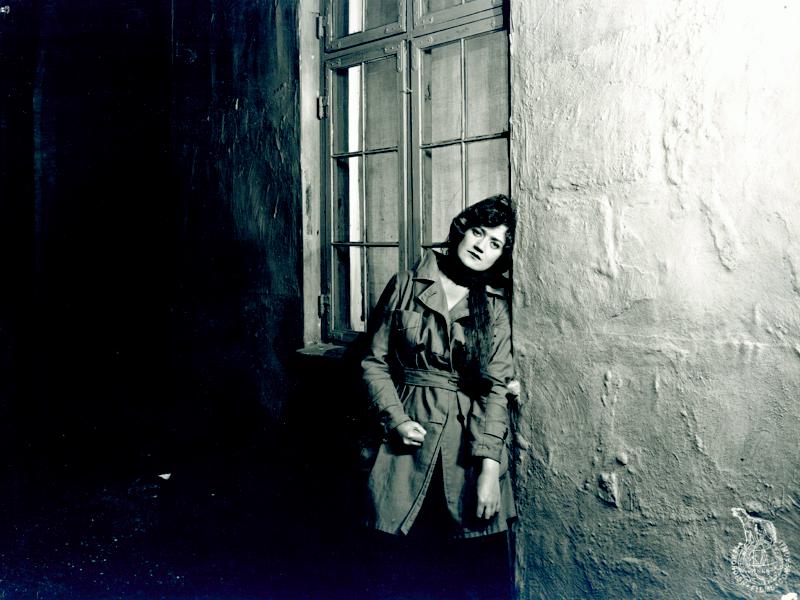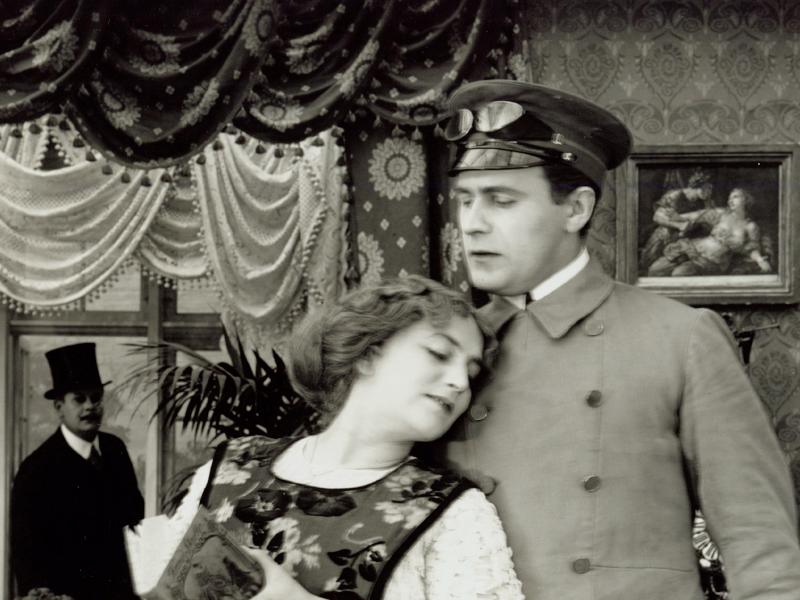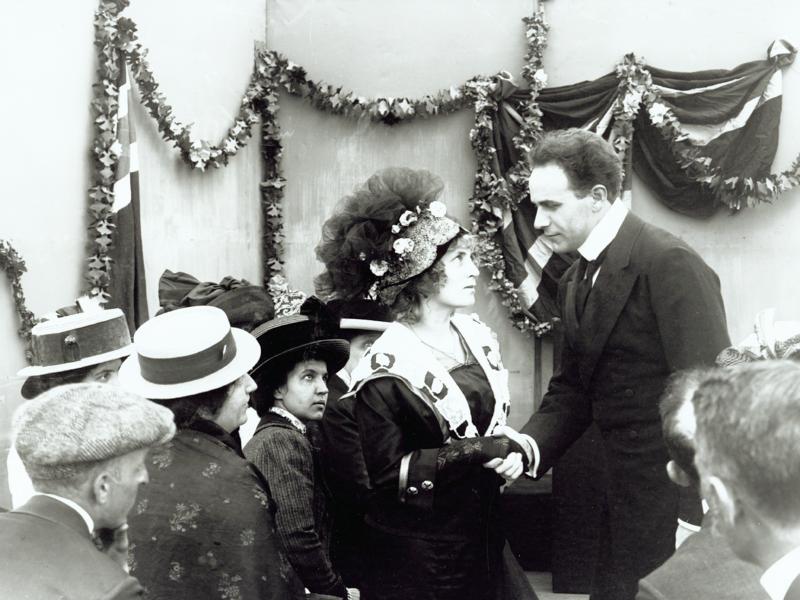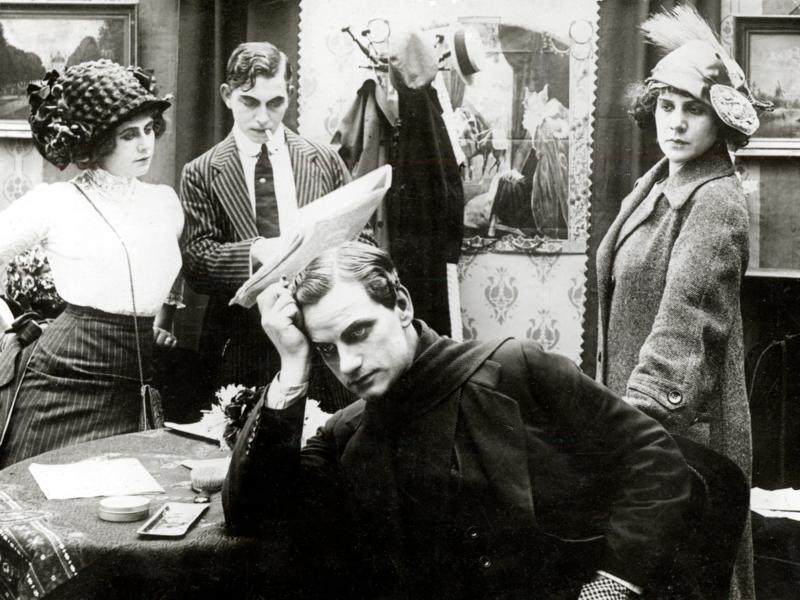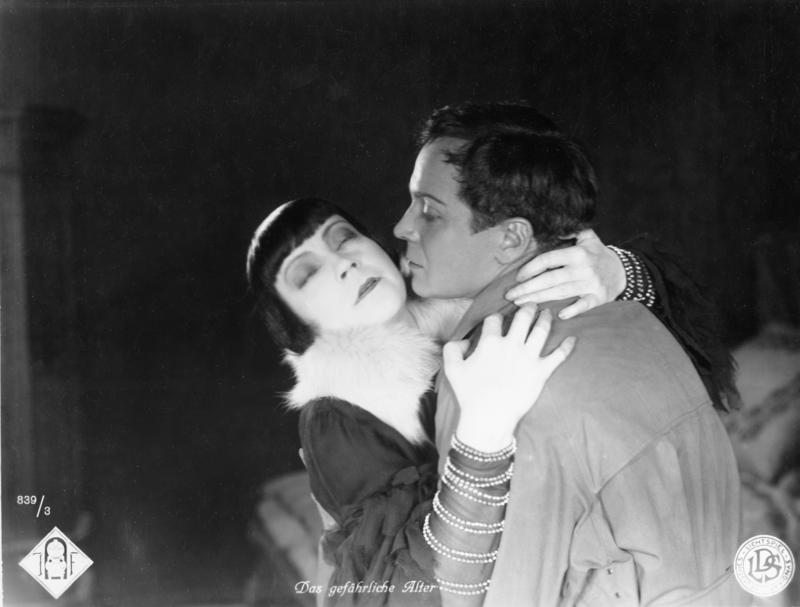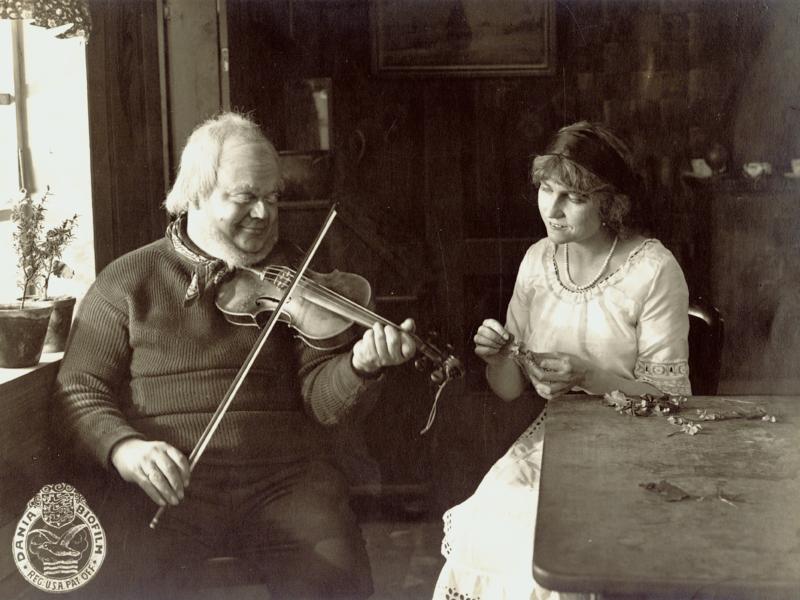A diverse catalogue of the paths and detours of love unfolds in the era of silent film – and with good reason! This is because the language of the heart is, as we all know, silent. What’s more, love is a universal theme that seamlessly transcends national borders and can be deciphered by everyone. We take a closer look at the wordless language of love – from big gestures to long movie kisses – in the early Danish films.
Lisbeth Richter Larsen, Editor | 31 June 2022
Love comes in many forms, film being one of them. Flirting, falling in love, seduction and courtship are key ingredients in the recipe of silent film in the 1910s and 1920s. The films portray love across class boundaries, love that conquers all, self-sacrificing love, exotic love, silly love, and life-threatening love. If we glance at film genres, great emotions unfold in the jealousy drama, the romantic pursuit, the romantic comedy, the tragedy and, not least, the erotic melodrama.
It is said that “a look can tell more than a thousand words”. But in the early days of film, before the camera really started zooming in and reading facial expressions in close-ups, big arm movements were used to convey the innermost feelings of the heart. The so-called “affected acting” was the actors’ means to display both seduction and dismay.
A whole variety of gestures and movements simulated various moods and deep feelings. A hand on the heart was a universal gesture. Whether Cupid’s arrow had hit its target, or whether the main character had been knocked off their feet by grief and shock at failure – and this happened all the time in the silent dramas – a hand was brought to the chest to emphasise the feeling. Other major states of distress and reactions involved the wringing of hands, leaden stares, and sly smiles if a young lady took the bait. In short: big gestures signified strong feelings.
A foot sensually stretched out
However, if you look more closely, the good actors also master a finer and more nuanced language of love. When the millionaire’s daughter Clara Wieth in The Modern Girl is searching for a private driver and spots the first hero of romance in Danish film, Valdemar Psilander, in the queue of hopeful men, she strokes her beautiful shepherd dog while looking at him straight in the eye. Later in the film, her laces have come undone (oops!), and here Psilander, with his sensitive hands, takes forever to tie her silk laces on the foot she had stretched out.
A “line” plays whimsically into the love-across-class-boundaries game, for when he gets carried away and throws himself over her hand to kiss it, she coquettishly pulls it away “with fury”, and the intertitle reads: “You’re forgetting your place”. A little later in the film, we see her flirtatiously leaning towards the driver, after which Psilander takes a step back, touches his cap to salute her and the intertitle reads: “You’re forgetting your place, Miss” – touché in the subtle game of flirtation!
At the start of The Girl Behind the Counter, we meet Clara Wieth again – in the title role – this time opposite Carlo Wieth (yes, they were a couple in real life) who wants to buy a pair of gloves. The flirtation over the counter, when he reaches out and she offers him a pair of tight gloves, is adorably sensual and gloriously played. His welcoming, inquisitive gaze rests on her face as her coquettish downcast look briefly meets his with a quick smile that shoots forth, tames and makes her stumble a little, still fully focused on the intimate touch, quite legitimately brought about by the trying on of gloves. Watch the scene here:
Carlo and Clara Wieth in The Girl Behind the Counter.
Asta’s seductive hips
Asta Nielsen makes her film debut in the legendary The Abyss, which has since been called “the first erotic melodrama”.
In the film, Asta Nielsen plays the role of a respectable piano teacher Magda, engaged to a handsome son of the priest, but then gets seduced by a masculine low-life circus performer (Poul Reumert) riding on the back of a horse. He literally takes her (in a passionate kiss lasting several seconds) by storm. Magda’s erotic obsession quickly pales at the shortcomings and simplicity of the cowboy scrounge.
Asta Nielsen’s film breakthrough is synonymous with the iconic dance scene in The Abyss, better known as the “Gaucho” dance. The dance scene stands as an almost avantgarde portrayal of the ferocity of a female seductress with clear sadomasochistic vibes, inspired by the Parisian Apache dance, where the woman is typically pushed down with her wrists twisted and is turned backwards by the brutal ruffian in a piquant dance. In a much later review of The Abyss, the film critic Erik Ulrichsen, with barely concealed enthusiasm, calls Asta Nielsen “a pure sex creature” and adds these descriptive words: “she is pure lust”. Watch the dance scene here:
Asta Nielsen and Poul Reumert in The Abyss.
The hunger for life that she displays in the seductive dance scene, where she literally conquers the man and ties him with a lasso, is replaced by loss of life in the final scene in which, after killing him with a knife, as apathetically as a rag doll, she is led away from the crime scene by a police officer. All brilliantly conveyed by Asta’s powerful body language and facial expressions.
Outgoing women
The daring films which fall under the label “erotic melodrama” almost became a Danish trademark and a bestselling genre. In the outside world, the films were described with words like “lecherous” and “sleazy”. They had parts cut out by the censorship authorities and were sometimes banned altogether. Several Danish films challenge boundaries and also turn gender role stereotypes on their head:
The Gaucho dance is one of the first examples of a sexually adventurous and conquering woman, but also in films such as The Price of Beauty, filmed in 1911, and The Four Devils, it is the woman’s sexual hunger that drives the drama. In its pure form, the genre peaks in 1910-12 and also draws inspiration from the cabaret culture, from which, for example, we get the “Vampire Dance”. Nordisk Film even recorded a film with the title The Vampire Dancer in 1912 (read more about the film in The Danish Film Database). From this “trend”, which found its way to the Danish stage as well as movie screens, comes the American word “vamp”, which denotes an often (self-)destructive woman who, by virtue of her beauty and sexuality, seduces men.
The kiss
In 1913 the Danish film magazine “Filmen” wrote: “The Danish kiss is now famous around the world, and the Americans envy us this record in endurance. (...) The Danish movie kiss is an average of 3½ meters long [in recorded film = approximately 10 seconds], and the viewer completely loses their cool while it’s taking place”. Whether Danish films were world renowned for their daring movie kisses is probably a bit of a contested claim. That said, there is certainly a lot of passionate kissing with fluctuating intensity in the love films that we’ve selected here.
Valdemar Psilander and Clara Wieth in Temptations of a Great City.
In Temptations of a Great City, Psilander is almost violent in his behaviour towards the half-lying Clara Wieth, like a cobra snake that bites. In The Price of Beauty (1911), he rudely abandons Clara himself in favour of (oops!) his future mother-in-law, when he flings himself on her and gives her a looong kiss at a ball. In the marry-not-for-money-but-for-love drama Two People, the revelation comes in the form of a silhouette kiss, and in the love triangle tragedy The Clown we get a variant of it: the fatal deceitful kiss, which takes place behind the clown’s back, is revealed in a mirror in front of him.
You can find more movie kisses, seductions and fatal conquests in the overview here on the page of the best love films on Danish Silent Film.
Lisbeth Richter Larsen, Editor | 31 June 2022


